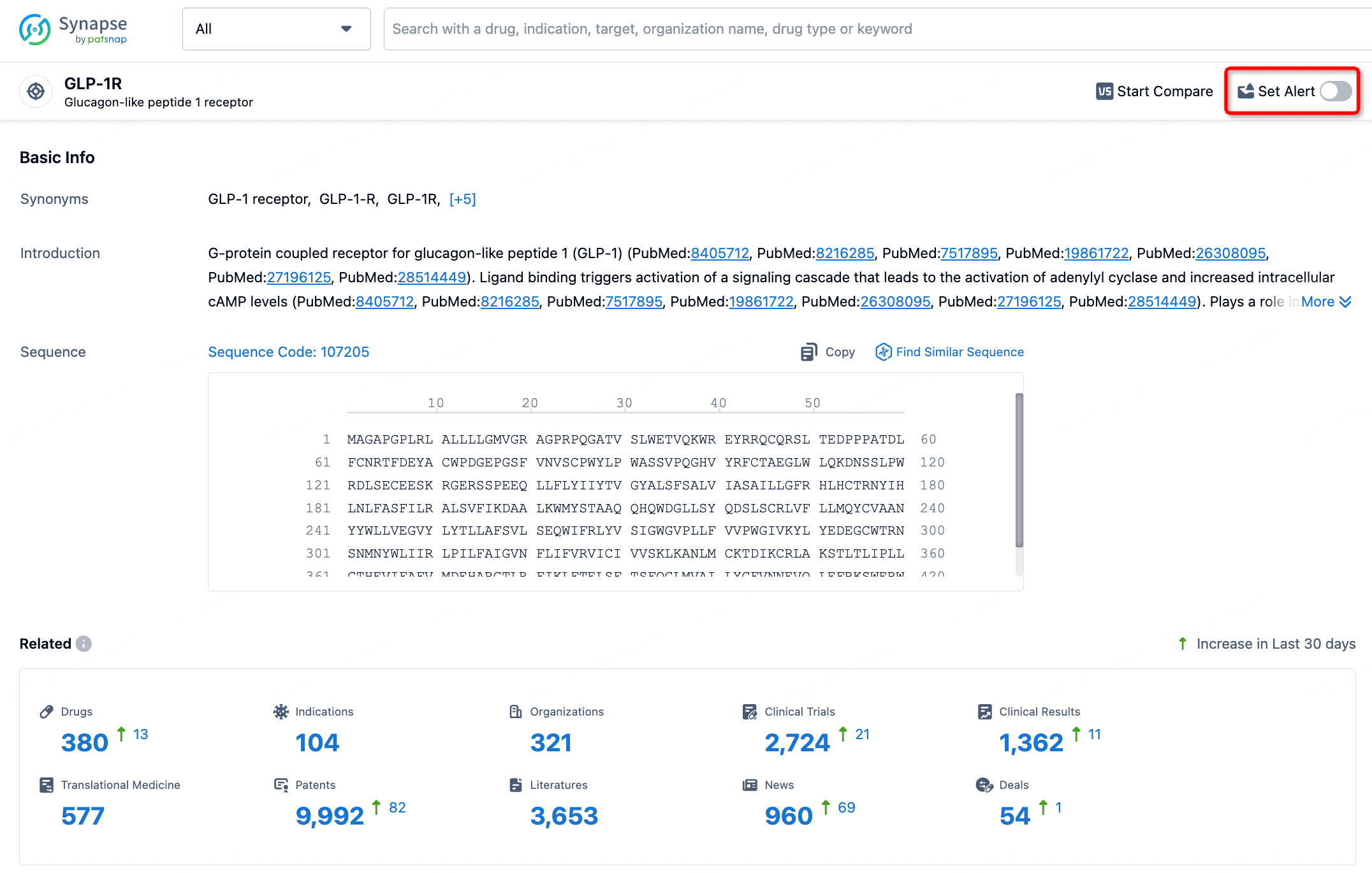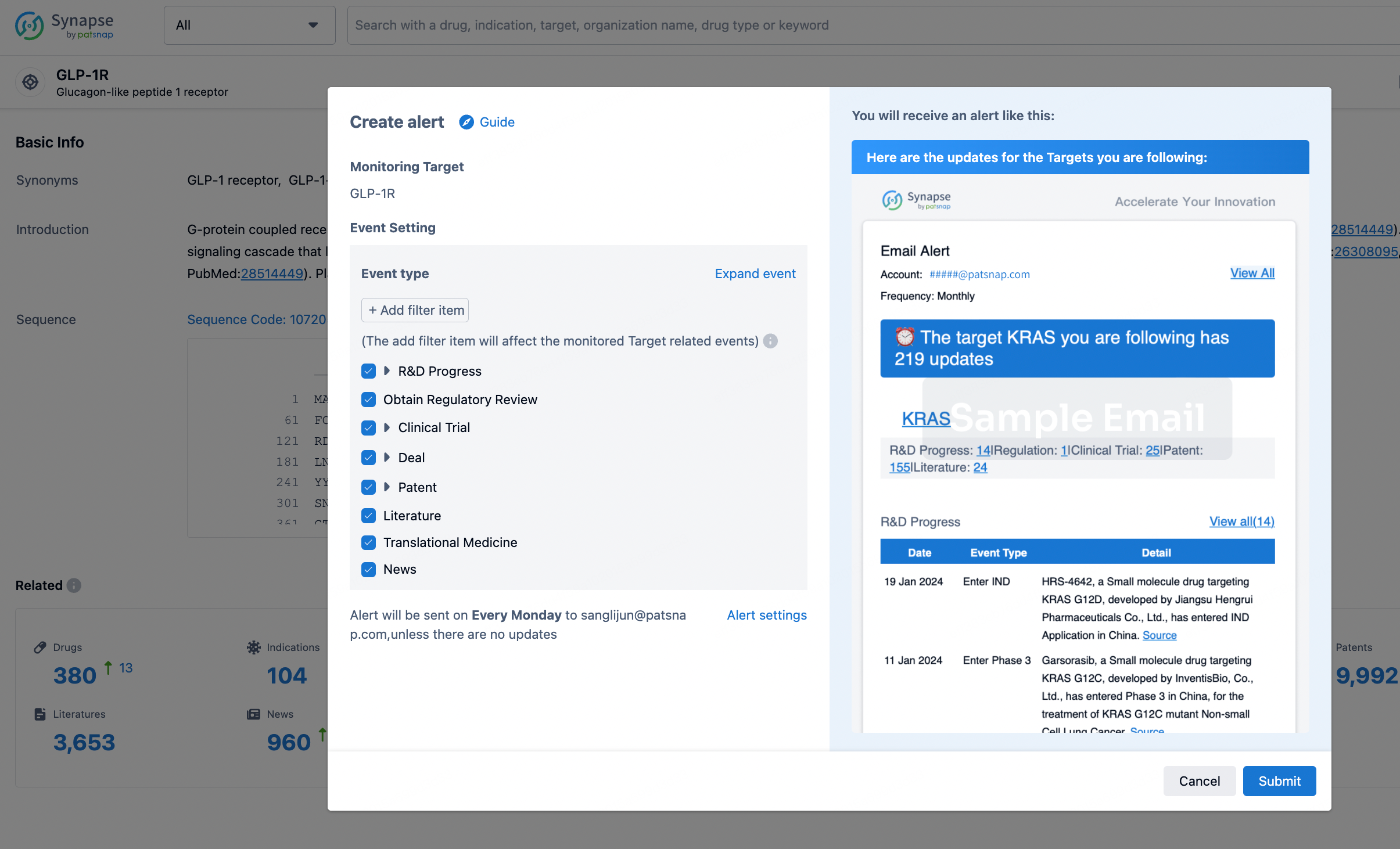Request Demo
What are CD166 inhibitors and how do they work?
25 June 2024
CD166, also known as ALCAM (Activated Leukocyte Cell Adhesion Molecule), is a cell surface glycoprotein involved in various cellular processes such as immune response, cell migration, and cell signaling. It plays significant roles in the development and progression of several diseases, particularly in cancer. Given its involvement in these critical pathways, CD166 has emerged as a promising target for therapeutic intervention. CD166 inhibitors are designed to modulate the activity of this protein, thereby potentially offering new avenues for disease treatment. This blog post delves into the mechanisms, applications, and potential benefits of CD166 inhibitors.
How do CD166 inhibitors work?
CD166 inhibitors function by interfering with the interaction between CD166 and its binding partners. CD166 mediates cell-cell adhesion and interacts with a variety of ligands, including itself (homophilic binding) and other cell surface molecules (heterophilic binding). These interactions are crucial for processes like cell migration, immune cell activation, and tumor metastasis.
The primary mechanism of action for CD166 inhibitors involves blocking these interactions. This can be achieved through several strategies:
1. **Monoclonal Antibodies**: These are highly specific antibodies designed to bind to CD166, preventing it from interacting with its ligands. By blocking these interactions, monoclonal antibodies can inhibit processes like tumor cell adhesion and migration.
2. **Small Molecule Inhibitors**: These are low molecular weight compounds that can penetrate cells and disrupt intracellular signaling pathways associated with CD166. They work by binding to the active sites or altering the conformation of CD166, thereby inhibiting its function.
3. **Peptide-based Inhibitors**: These are short chains of amino acids that can mimic or interfere with the binding sites of CD166. They can competitively inhibit the natural ligands from binding to CD166, thereby blocking its activity.
What are CD166 inhibitors used for?
The potential applications of CD166 inhibitors span a wide range of diseases, with a particular focus on cancer and inflammatory conditions.
**Cancer Therapy**
CD166 is overexpressed in several types of cancers, including breast, colon, pancreatic, and melanoma. Its overexpression is often correlated with poor prognosis and increased metastatic potential. By inhibiting CD166, researchers aim to reduce tumor growth and prevent metastasis.
1. **Breast Cancer**: CD166 inhibitors can be used to target breast cancer cells that exhibit high levels of CD166, thereby reducing their ability to adhere and migrate to other tissues. This could potentially slow down or prevent the spread of cancer.
2. **Colon Cancer**: In colon cancer, CD166 plays a role in the adhesion of cancer cells to the extracellular matrix, facilitating metastasis. Inhibiting CD166 can disrupt this adhesion, thereby reducing metastatic spread.
3. **Melanoma**: Melanomas often express high levels of CD166, which contributes to their aggressive behavior. Targeting CD166 in melanoma could help in reducing tumor growth and dissemination.
**Inflammatory Diseases**
Beyond oncology, CD166 inhibitors hold promise in treating inflammatory diseases. CD166 is involved in the activation and migration of immune cells, processes that are often dysregulated in inflammatory conditions.
1. **Rheumatoid Arthritis**: In this autoimmune disease, immune cells attack the joints, leading to inflammation and pain. CD166 inhibitors could potentially reduce the migration of these immune cells to the joints, thereby alleviating symptoms.
2. **Inflammatory Bowel Disease (IBD)**: CD166 is implicated in the migration of immune cells to the gut, a key feature of IBD. Inhibiting CD166 could reduce this migration, thus decreasing inflammation and improving gut health.
**Neurodegenerative Diseases**
Emerging research suggests that CD166 may also play a role in neurodegenerative diseases like Alzheimer's. CD166 inhibitors could potentially modulate the immune response in the brain, thereby offering a novel therapeutic approach for such conditions.
In conclusion, CD166 inhibitors represent a promising area of research with potential applications in cancer, inflammatory conditions, and possibly neurodegenerative diseases. While much of the research is still in the preclinical or early clinical stages, the growing understanding of CD166's role in these diseases provides a strong foundation for the development of effective CD166-targeted therapies. As research progresses, CD166 inhibitors could become a valuable addition to the therapeutic arsenal against some of the most challenging diseases.
How do CD166 inhibitors work?
CD166 inhibitors function by interfering with the interaction between CD166 and its binding partners. CD166 mediates cell-cell adhesion and interacts with a variety of ligands, including itself (homophilic binding) and other cell surface molecules (heterophilic binding). These interactions are crucial for processes like cell migration, immune cell activation, and tumor metastasis.
The primary mechanism of action for CD166 inhibitors involves blocking these interactions. This can be achieved through several strategies:
1. **Monoclonal Antibodies**: These are highly specific antibodies designed to bind to CD166, preventing it from interacting with its ligands. By blocking these interactions, monoclonal antibodies can inhibit processes like tumor cell adhesion and migration.
2. **Small Molecule Inhibitors**: These are low molecular weight compounds that can penetrate cells and disrupt intracellular signaling pathways associated with CD166. They work by binding to the active sites or altering the conformation of CD166, thereby inhibiting its function.
3. **Peptide-based Inhibitors**: These are short chains of amino acids that can mimic or interfere with the binding sites of CD166. They can competitively inhibit the natural ligands from binding to CD166, thereby blocking its activity.
What are CD166 inhibitors used for?
The potential applications of CD166 inhibitors span a wide range of diseases, with a particular focus on cancer and inflammatory conditions.
**Cancer Therapy**
CD166 is overexpressed in several types of cancers, including breast, colon, pancreatic, and melanoma. Its overexpression is often correlated with poor prognosis and increased metastatic potential. By inhibiting CD166, researchers aim to reduce tumor growth and prevent metastasis.
1. **Breast Cancer**: CD166 inhibitors can be used to target breast cancer cells that exhibit high levels of CD166, thereby reducing their ability to adhere and migrate to other tissues. This could potentially slow down or prevent the spread of cancer.
2. **Colon Cancer**: In colon cancer, CD166 plays a role in the adhesion of cancer cells to the extracellular matrix, facilitating metastasis. Inhibiting CD166 can disrupt this adhesion, thereby reducing metastatic spread.
3. **Melanoma**: Melanomas often express high levels of CD166, which contributes to their aggressive behavior. Targeting CD166 in melanoma could help in reducing tumor growth and dissemination.
**Inflammatory Diseases**
Beyond oncology, CD166 inhibitors hold promise in treating inflammatory diseases. CD166 is involved in the activation and migration of immune cells, processes that are often dysregulated in inflammatory conditions.
1. **Rheumatoid Arthritis**: In this autoimmune disease, immune cells attack the joints, leading to inflammation and pain. CD166 inhibitors could potentially reduce the migration of these immune cells to the joints, thereby alleviating symptoms.
2. **Inflammatory Bowel Disease (IBD)**: CD166 is implicated in the migration of immune cells to the gut, a key feature of IBD. Inhibiting CD166 could reduce this migration, thus decreasing inflammation and improving gut health.
**Neurodegenerative Diseases**
Emerging research suggests that CD166 may also play a role in neurodegenerative diseases like Alzheimer's. CD166 inhibitors could potentially modulate the immune response in the brain, thereby offering a novel therapeutic approach for such conditions.
In conclusion, CD166 inhibitors represent a promising area of research with potential applications in cancer, inflammatory conditions, and possibly neurodegenerative diseases. While much of the research is still in the preclinical or early clinical stages, the growing understanding of CD166's role in these diseases provides a strong foundation for the development of effective CD166-targeted therapies. As research progresses, CD166 inhibitors could become a valuable addition to the therapeutic arsenal against some of the most challenging diseases.
How to obtain the latest development progress of all targets?
In the Synapse database, you can stay updated on the latest research and development advances of all targets. This service is accessible anytime and anywhere, with updates available daily or weekly. Use the "Set Alert" function to stay informed. Click on the image below to embark on a brand new journey of drug discovery!
AI Agents Built for Biopharma Breakthroughs
Accelerate discovery. Empower decisions. Transform outcomes.
Get started for free today!
Accelerate Strategic R&D decision making with Synapse, PatSnap’s AI-powered Connected Innovation Intelligence Platform Built for Life Sciences Professionals.
Start your data trial now!
Synapse data is also accessible to external entities via APIs or data packages. Empower better decisions with the latest in pharmaceutical intelligence.


